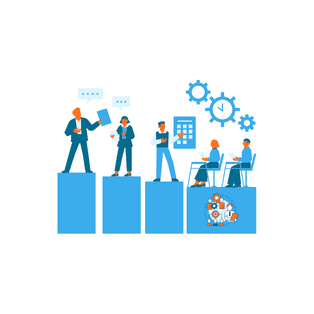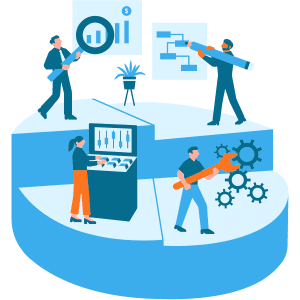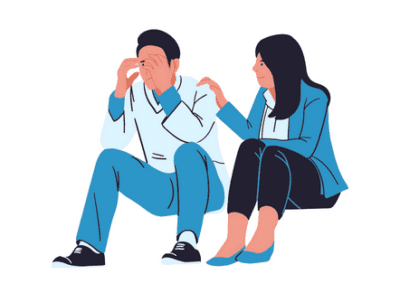What is Employee Appreciation?

Employee appreciation is an act by employers or organizations to acknowledge the inherent value of employees. Instead of focusing only on their performance, it celebrates their worth as a member of the business and as human beings. This requires significant attention to detail and creativity when implementing appreciation programs in the workplace.
By using employee appreciation strategies, you can increase your overall employee retention and wellness. Without appreciation, employees are likely to become lose motivation and interest in their jobs. This makes year-long employee appreciation critical.
According to new research, individuals who received thanks at work in the last month are only half as likely to be actively seeking a new job. They’re also three times more likely to see a path to grow within the organization. There is even a special day called Employee Appreciation Day, celebrated on the first Friday of March, to honor employees.
Types of Employee Appreciation
Experts often classify employee appreciation into six categories, based on three parameters.
- Who is appreciating?
- What are they appreciating?
- How are they appreciating?
With these parameters in mind, let’s look at the different types of employee appreciation we see most commonly in the workplace.
Peer-to-Peer Employee Appreciation
Peer-to-peer employee appreciation is when coworkers in a company acknowledge and appreciate each other’s hard work and accomplishments. It is a form of appreciation that empowers employees to express gratitude and admiration for their peers’ work.
In a program where employees appreciate each other, they can nominate and praise their colleagues. They can do this for doing a great job, going beyond their duties, or showing qualities that match the company’s values. Peers can give feedback and appreciation in many ways. These include written notes, public acknowledgments in team meetings, and participating in a formal recognition program or platform.

Manager Appreciation
Employee appreciation from managers is a vital aspect of creating a positive work environment and nurturing a motivated and engaged workforce. It involves recognizing the hard work, dedication, and achievements of employees under their supervision.
Through verbal recognition, managers can express genuine gratitude and praise for the contributions made by their team members. Sending personalized notes or emails shows appreciation and serves as a lasting reminder of recognition.
Managers can also show appreciation by providing opportunities for professional development, offering constructive feedback, and supporting the work-life balance of their employees. When managers actively appreciate their team members, it not only boosts morale and job satisfaction but also cultivates a sense of trust, loyalty, and motivation within the team, leading to increased productivity and overall success.
Event Based Employee Appreciation
Event-based appreciation is a powerful tool to celebrate and acknowledge employees’ positive accomplishments and milestones within an organization. By linking recognition to specific events or achievements, employers can create a sense of excitement surrounding these occasions.
One example of event-based appreciation is recognizing work anniversaries. Milestones such as five, ten, or twenty years of service represent significant dedication and loyalty from employees. Organizing a special event or ceremony to commemorate these milestones allows employers to publicly honor the employee’s commitment and contribution to the company.
Regular Appreciation

Regular appreciation is an important aspect of fostering a positive work culture and ensuring that employees feel valued and recognized for their day-to-day contributions. While some accomplishments may be more visible or easier to measure, it is equally important to appreciate employees for consistently performing their roles and responsibilities with dedication and excellence.
Support functions such as IT, administration, payroll management, and other behind-the-scenes roles often work diligently to ensure the smooth functioning of an organization. While their contributions may not always be in the spotlight, they play a crucial role in supporting the overall operations and success of the company.
Then there are also formal and informal employee appreciation types. Formal appreciation is probably the most common type and is when employees are recognized in email newsletters, award ceremonies, or similar formal events.
Informal appreciation on the other hand is far more casual. It might be a passing comment,or a shout-out on the company chat app among other team members. This is essential to keep employees motivated on a day-to-day basis.
Benefits of Employee Appreciation
DRIVES EXCELLENCE
Employee recognition is the foundation for creating a culture of excellence in an organization. It strengthens relationships and provides a clear purpose aligned to achieve goals. A culture of excellence allows business leaders to drive toward key goals like retention, culture, and employee happiness. This is done by connecting people and culture to shared purpose.
DRIVES ENGAGEMENT
84% percent of those surveyed in a SHRM/Workhuman Employee Recognition Survey said that social recognition measurably and positively impacted engagement.
NURTURES TRUST
Strong organizational trust is a key indicator for profitability. Research has shown that workers who trust senior leaders are nearly twice as likely to be engaged and love their jobs.
REINFORCES COMPANY VALUES
Employee recognition aligns your people and culture to a shared purpose. Due to employee recognition being designed with rewards that map back specifically to each value, it integrates those ideals into employees’ everyday thoughts and actions.
Steps to Introduce Employee Appreciation

1. BUILD A BRAND
It’s important that you base your program around your companies’ culture. Through personalization, you can tailor your appreciation to specific individuals to make the token that much more special. Whether that’s through the colors you use, the eCards or the tiles you design, or the language and tone of voice you use throughout, these elements all come together and can really inject personality into your program.
2. ALLOW YOUR EMPLOYEES TO NAME THE PROGRAM
The employee appreciation program name should mean something to your people. A good way of doing this is inviting suggestions on the program. During the design phase of a project, some clients can run a competition and get people to submit their ideas and select the name based on votes or through a project committee.
3. LEVERAGE THE POWER OF VIDEO
A short introduction video that explains your program and how to use it with employees from different areas of the business explaining what recognition means to them can be a powerful way to spread your core messages and keep people informed. Video doesn’t have to be complicated or expensive.
4. GET READY FOR A COUNTDOWN
Let your people know that a new recognition program is something worth getting excited about. Send out teaser emails, do a countdown or anything that piques people’s interest and gets them wondering what’s to come.
5. TRAIN YOUR LEADERS

A key part of running a successful program is ensuring that managers are equipped with the knowledge and skill to recognise staff in a meaningful and respectful way. Schedule workshops for leaders that focus on the ‘why’ of recognition and how to deliver strategic recognition. Provide key leaders with early access, long before the program launches and provide opportunities to address questions or walk them through the platform so they’re comfortable with using it.
6. CELEBRATE AND DECORATE
Generate buzz and excitement on launch day by decorating the office with posters, printouts of eCards and run a competition to encourage employees to sign up and start using the program straight away. As highlighted above, its important to let your employer brand shine and have fun with it.
7. MARK RECOGNITION IN YOUR DIARY
While recognition should ideally be timely and immediate, if your company is new to recognition then you might need to remind people before it becomes a habit. If you can, launch your program around a specific recognition focus event such as ‘Employee Appreciation’ Day.
8. USE EXISTING GATHERINGS AS RECOGNITION OPPORTUNITIES
Instead of treating your employee recognition program launch as a one-off event, treat it like a roll-out. Changing attitudes and behaviour towards recognition takes time, so use every opportunity you can to talk about the program. Place the program in the mind of the employees and strive to create a norm out of this type of event.
In whatever way you want to celebrate employee appreciation, its essential that you do so in the appropriate manner. Employees want to enjoy their work and feel wanted in today’s environment so it’s necessary to carry out these events in order to make them feel so and in doing so, reducing turnover rates.




